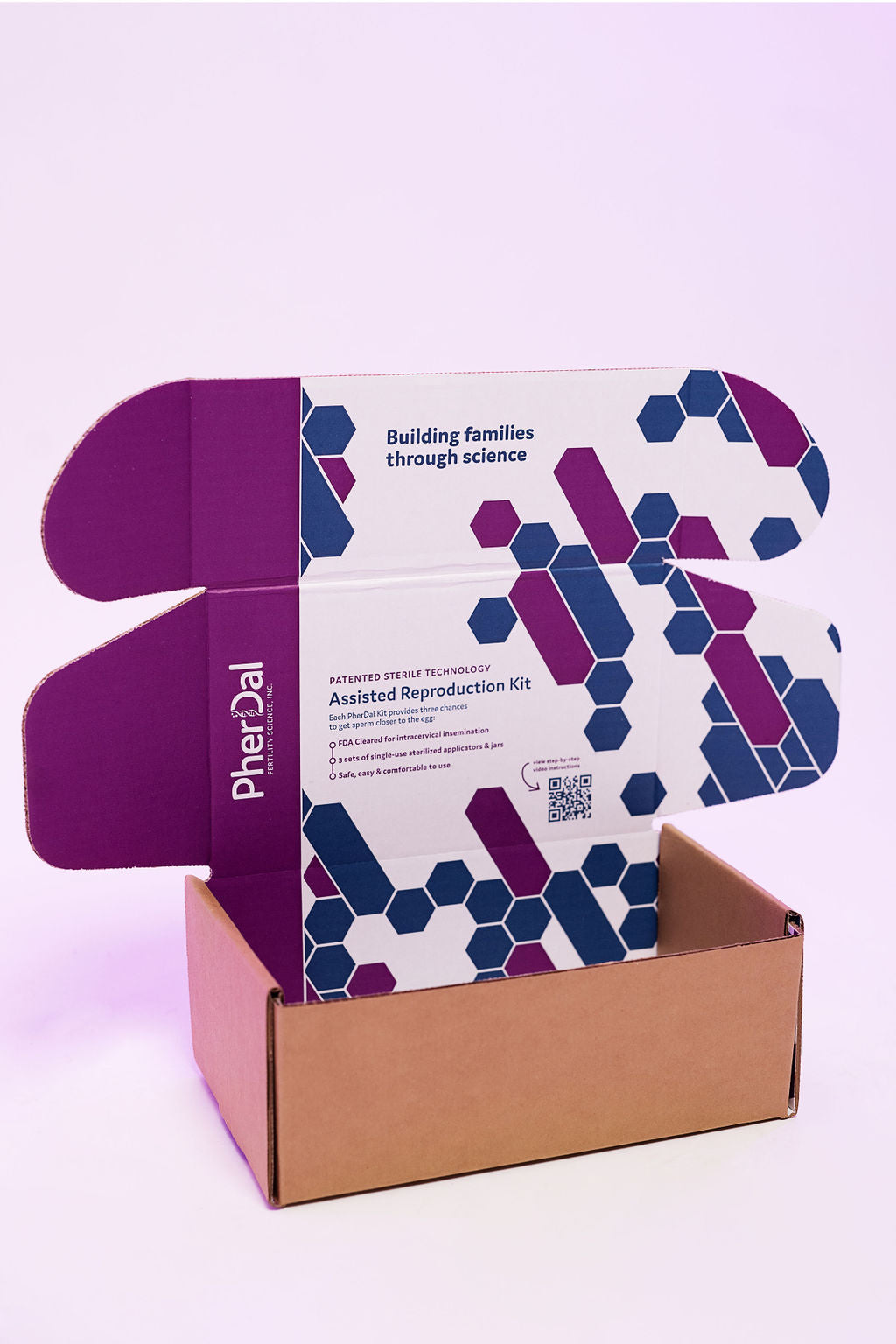The concept of artificial insemination is familiar to most people, but you might be surprised to know the first attempts of the procedure as we know it today date back to 1899. Thankfully, technology and the techniques used for insemination have significantly improved over time, and the procedure is now performed in several ways.
Intracervical insemination (ICI) involves inserting sperm into the cervix while the woman lays down for 15–30 minutes to allow sufficient time for the sperm to travel to the uterus. An intrauterine insemination (IUI) follows a similar process, with 3 differences:
-
Sperm is inserted directly into the uterus, bypassing the vagina and cervix.
-
IUI makes use of washed sperm, unlike ICI.
-
There’s no safe way to perform an IUI at home at this time, so if someone is seeking this method, they’d need a prescription in a clinic.
Couples from all backgrounds are increasingly turning to artificial insemination to conceive. However, they are hesitant to seek treatment in a clinical setting, leading to increased questions about attempting ICI and IUI at home. At this time, however, IUI at home is simply unsafe and there’s no FDA-approved method of performing an ICI at home, yet. Here at PherDal we are aiming to develop the first FDA-cleared, over the counter, sterile ICI kit.
In this post, we explore what’s driving the increase in artificial insemination procedures and compare their conception success rates.
Why Opt for Artificial Insemination?
Artificial insemination can be a successful option for couples experiencing trouble conceiving. With approximately 15% of reproductive-aged couples worldwide affected by infertility, there’s a growing need for treatment alternatives that are safe, effective, and affordable.
With that said, infertility is only one of many reasons people may be wondering about their options for performing an ICI or IUI at home, the latter of which simply isn’t safe.
Infertility
Artificial insemination has the potential to assist both men and women suffering from infertility issues. Conditions such as endometriosis, cervical factor infertility, and male sperm motility and morphology issues are common in couples seeking reproductive assistance.
In addition, couples may be diagnosed with idiopathic or unexplained infertility, which can leave them frustrated and confused. Emerging research suggests that bacteria and the vaginal microbiome may play a critical role in cases of unexplained infertility.
Same-Sex Couples
Same-sex couples and transgender people can encounter many challenges when trying to build a family. Unfortunately, despite the increase in same-sex couples seeking fertility services, they often face significant barriers.
Medical and legal systems designed for heterosexual reproduction can make couples uncomfortable and understandably hesitant to seek assistance. Since attempting an IUI at home is unsafe at this time, an ICI might be an accessible and inclusive option for same-sex couples to explore.
Single Motherhood
More and more women are becoming single mothers by choice. Whether it comes down to not finding the right partner or a conscious decision to fly solo, women are seeking reproductive assistance to fulfill their desire to start a family. Artificial insemination provides a cost-effective and less complicated pathway to motherhood (is anything about being a single mom uncomplicated, though?).
Physical conditions resulting in an unconsummated relationship
When a couple is unable to have penetrative vaginal intercourse due to physical conditions, it can lead to feelings of guilt and hopelessness. Erectile dysfunction and vaginismus are two of the most common physical causes of an unconsummated relationship. Artificial insemination offers couples an alternative method of conceiving.
Why Some Prefer At-Home Insemination
Multiple factors can contribute to the success of artificial insemination, but the building where the procedure takes place is certainly not one of them. The mere thought of attending a clinical setting for insemination is the stuff of nightmares for some people.
While it’s smart to avoid an IUI at home, a personally-performed ICI can deliver the following benefits:
-
Comfort – Couples can perform the procedure in the privacy and comfort of their own home.
-
Improved timing – The timing of the insemination plays a critical role in increasing the chances of conception. At-home insemination allows couples to plan the procedure in the ideal fertile window.
-
Reduced cost – At-home insemination is substantially more affordable than receiving treatment in a fertility clinic.
-
Improved emotional experience – Many couples feel more relaxed in their home and can make the procedure more intimate and emotionally connective.
Is At-Home Insemination Successful?
Short answer: Yes!
Long answer: a lot of variables contribute to the success rate of artificial insemination. The 3 primary factors are age, fertility diagnosis, and the timing of the procedure. As a result, reported statistics on success rates can vary, with most studies indicating a conception rate of between 7 and 15%, with one study reporting pregnancy rates close to 20% per completed cycle.
There is often discussion over whether ICI is as successful as IUI in achieving conception. Due to the semen being placed closer to the ovaries in an IUI procedure, many assume that IUI results in a higher conception rate.
However, a 2015 study showed ICI and IUI have the same live birth rate over 6 months in both medicated and natural ovulation cycles. In addition, ICI and IUI at home are equally successful as IUI procedures performed in a fertility clinic and offer couples an affordable, safe, and effective option for achieving conception.
You Don't Have to Do This Alone
The journey to conceiving a child is not easy. Couples can experience a roller coaster of emotions that leave them exhausted, frustrated, and feeling alone. Thankfully, being able to perform an ICI in the security and privacy of their home gives couples an affordable and safe way to build a family.
At PherDal, we take women's health and sterile at-home insemination seriously. The PherDal at-home insemination kit provides a science-based, safe, and affordable fertility option to try in the privacy of your own home.
Importantly, it’s the only at-home insemination kit that’s completely sterile. Dr. Jennifer Hintzsche developed the kit's patent-pending design after she and her husband experienced the hurt, frustration, and pain of being unable to conceive their first child.
In other words, we get it and we’re here for you. PherDal's mission is to help empower all people on their fertility journey, and we will support you every step of the way.





